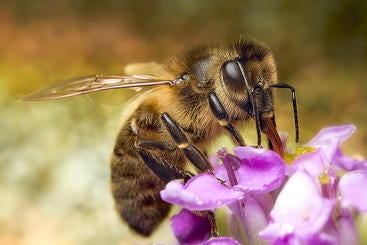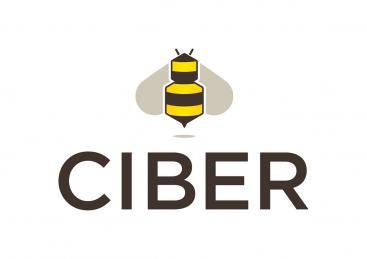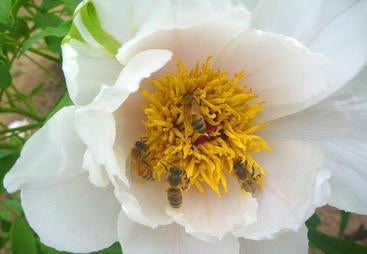After extensive research on the causes of pollinator decline, researchers have identified several contributing factors that can be grouped into four interacting categories: Parasites, Pesticides, Environmental Change, and Inferior Pollinator Management:
The Importance of Bees
Bees are the major pollinators of native flowering plants on all inhabited continents. Bee pollination is important for more than 80 agricultural crops, which account for about a third of global food production. In addition to agriculturally managed bees such as honey bees, bumble bees, and stingless bees, there are close to 20,000 species of wild, native pollinator species that contribute significantly to both agricultural and wild land pollination services. Bees have been a model species for a broad range of scientific studies for many years, and the full sequencing of several of their genomes has offered new insight into pollinator research.
The Declines of Bee Pollinators
Bees provide global pollination services essential to ecosystem stability and human food production, but recent declines in both managed colonies and wild, native populations threaten their persistence. These declines are attributed to a number of factors such as habitat destruction, pesticide exposure, spread of parasites and pathogens, and environmental change. Population declines have resulted in decreased pollination services and increased food prices. Despite substantial efforts of researchers, beekeepers, conservationists, and growers to identify the issues facing pollinator communities and develop innovative solutions, worldwide declines continue.
Safeguarding the Bees
Modern agriculture is heavily dependent on bees to pollinate crops, and the documented losses of managed and native pollinating insects have become a global concern. While more research is required to better understand bee declines, researchers agree that the problem is complex and there is no single cause. Consequently, declines in bee populations may need to be investigated using broad and multi-disciplinary approaches to better understand the complex relationships between insects, the plants they pollinate, and their environment. Furthermore, the domestication and breeding of some species of honeybees, bumblebees and stingless bees over thousands of years have heavily impacted and manipulated their populations and distributions, further complicating the issues.


